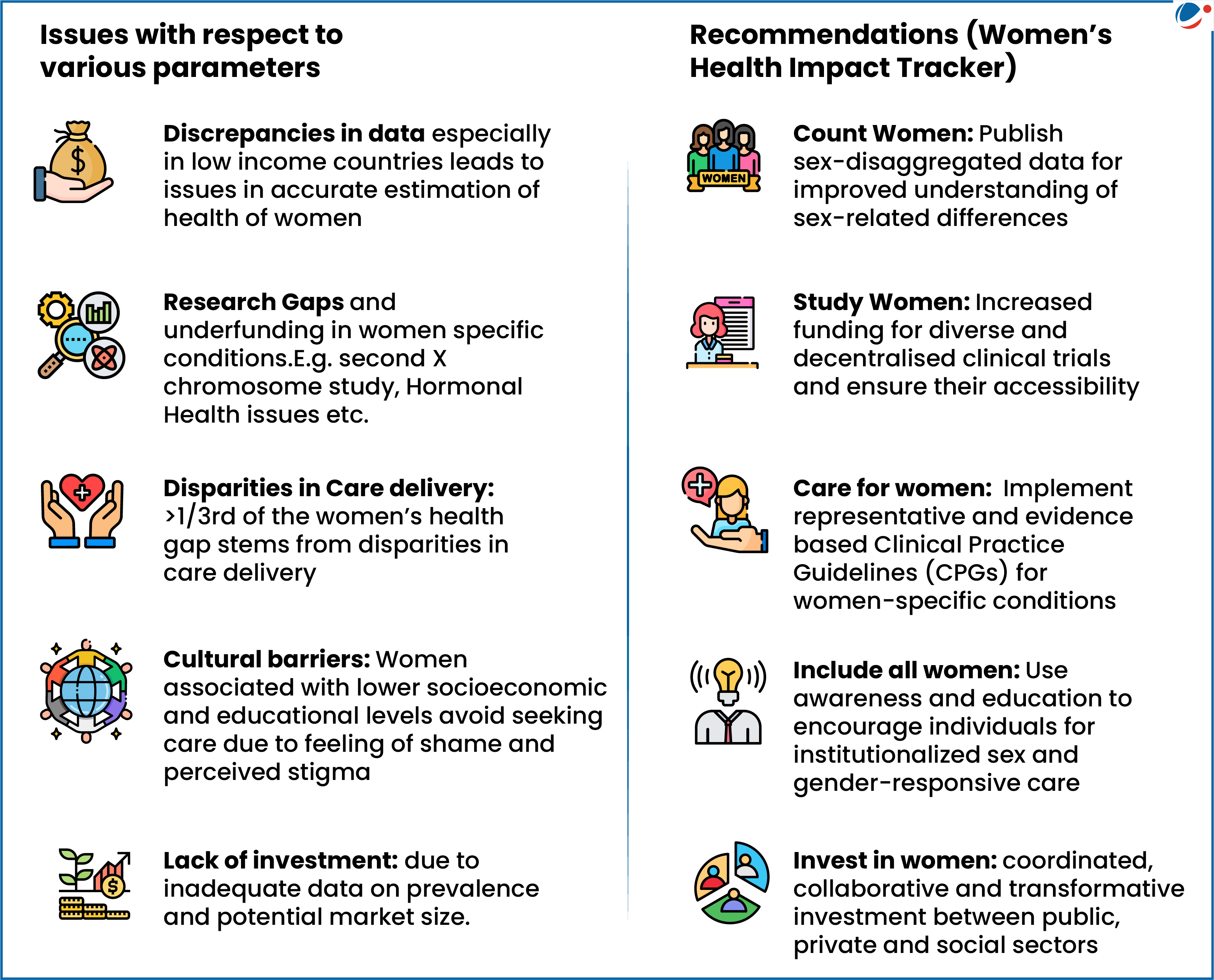Report prepared by WEF and McKinsey Health Institute underscores economic and societal potential of closing women’s health gap.
Key Findings of Report
- Women live 25% more of their lives in poor health when compared to men
- 9 selected conditions drive 1/3rd of women’s health gap.
- It includes conditions that affects lifespan (e.g. Cervical & Breast cancer, Maternal hypertensive disorders, Post-partum haemorrhage etc.) and conditions that affect health span (e.g. Menopause & perimenopause, Premenstrual syndrome (PMS), Migraine etc.)
- Potential:
- Closing the health gap could generate $1 trillion in annual global GDP by 2040
- and reclaim 75 million disability-adjusted life years (DALYs) annually.

Global health and social systems were not designed around the health of women. Public, private and social sector stakeholders can drive change in a world wherein women’s health gap is impeding productivity and holding women back from leading full and healthy lives





